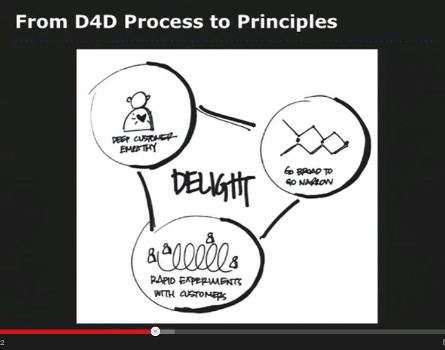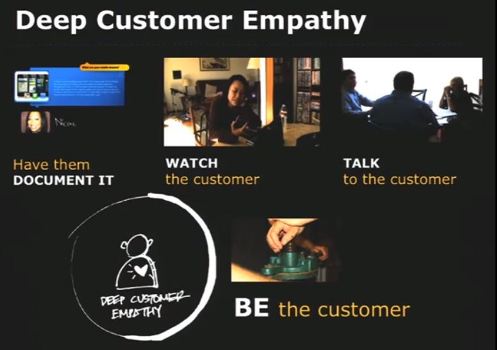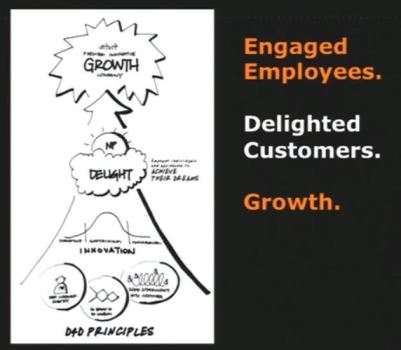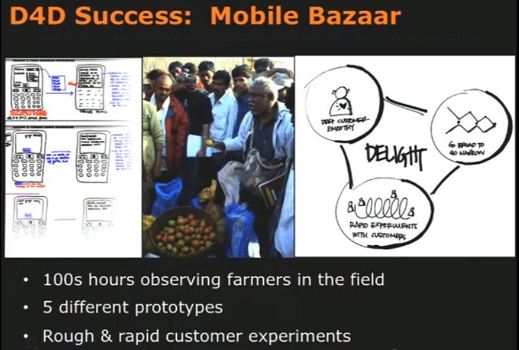 At this year's 2013 BRITE Conference, Kaaren Hanson, Vice President of Innovation at Intuit, shared deep thoughts on Creating a culture of rapid experimentation. Given my passion for the customer experience and innovation - and my personal experiences using Intuit products, I was spellbound!
At this year's 2013 BRITE Conference, Kaaren Hanson, Vice President of Innovation at Intuit, shared deep thoughts on Creating a culture of rapid experimentation. Given my passion for the customer experience and innovation - and my personal experiences using Intuit products, I was spellbound!
What I enjoyed most was the emphasis on making customer-focused innovation everyone's responsibility. It's collaborative, infectious, productive, and profitable; it involves rapid and ongoing experimentation. (Customers, by the way, can be internal as well as external.) It's also something that everyone in the company can focus on thanks to 2 days per month of unstructured time which can be banked for later use.
Intuit's innovative culture of rapid experimentation recognizes that many right answers exist. All of these can be reached faster and more cheaply than by focusing only on one right answer (aka the traditional approach). Hanson referred to simple lightweight experiments - as opposed to agonizing for elusive perfection. It's best to get started. Key to getting started is having the right size team, aka "2 pizza teams". That's 4 to 5 people; any more and that's too big a team.
Hanson refers to this culture or rapid customer experience-focused innovation as Design for Delight (note D4D in images below). It is based on the principles of:
- Deep customer empathy for inspiration.
- Rapid experimentation with customers
- Going broad with ideas to go narrow

Intuit's Principles for Design for Delight

This deep immersion into the customer's world enables Intuit to identify issues, problems, and pain points.

The end result of Design for Delight and rapid experimentation is threefold: delighted customers, engaged employees, and growth. Not a bad combination! In 2008, Intuit employees engaged in 4 experiments; in 2012, this had increased to 1300+ experiments encompassing all departments.
Ms. Hanson shared a success story titled Mobile Bazaar, captured in the visual below. The goal of this program was to create a new business that would help farmers be successful. The vision consisted of figuring out how to raise farmer incomes by 10%. The team examined several options, including an eBay marketplace. Of primary concern was how to bring greater transparency to the farmers' marketplace.
As a result of deep customer empathy and research, coming up with many ideas to consider and rapidly experimenting with customers, the team came up with a solution: texting the prices of produce being sold.

In the BRITE Conference presentation, Kaaren Hanson ended with three marvelous lessons:
1. Fall in love with the problem rather than the solution
2. Scrappy doesn't = crappy
3. There's no right answer other than getting started
For added perspective on the presentation, I recommend the following resources:
- PSFK's DREW NEISSER published How Innovation Can Survive in a Bureaucracy, an interview with Kaaren Hanson, in anticipation of BRITE 13.
- I thoroughly enjoyed MX 2011 | Kaaren Hanson, a 26-minute video from which I pulled the visuals above. You can watch it here:
Innovation and Customer Experience at Intuit
What do you think about Design for Delight and what Intuit has created? How do you focus on your customer experience? How do you nurture innovation? Could you see embracing a culture of rapid experimentation?
Let me know in the comments.







